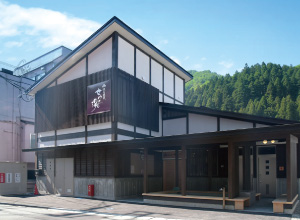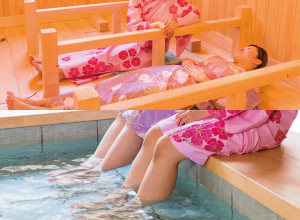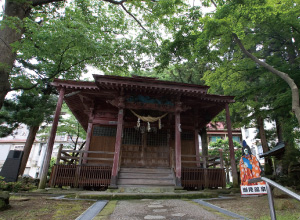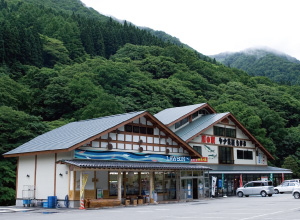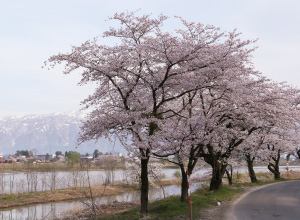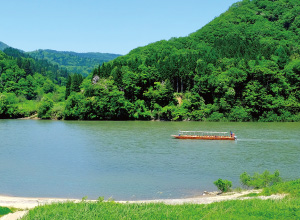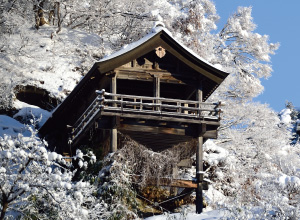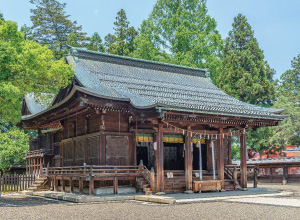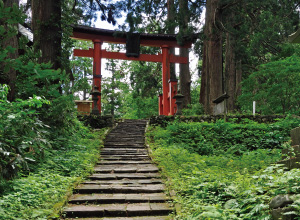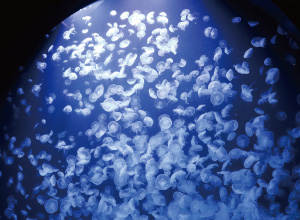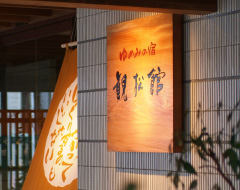ATTRACTIONS
Centred around the Oguni River, Semi Onsen flourished as a spa retreat for the feudal lord of Tozawa-han (a feudal territory that is now Shinjo City). The hot springs are said to have been discovered by a company of Minamoto Yoshitsune heading to Hiraizumi (Iwate Prefecture), pursued by forces of his brother Yoritomo, and the legend has been passed down through generations. Discover the charms of Semi Onsen, a spa town with a nostalgic feel full of warmth and traditional atmosphere.
- ① Semi Onsen Communal Bath "Semi no Yu"
- There are steam baths and outdoor baths as well as ordinary large baths. There are two large baths at different temperatures. Only slightly diluted, the quality of the thermal water is close to that of the source. In the steam bath, heat the affected parts of your body with steam generated through small holes in the floor. Enjoy a free foot bath, too.
- ② Yusen Shrine
- Yusen Shrine enshrines a tutelary deity of the Semi Onsen hot springs. On the 1st of September every year, memorial services for Yoshitsune take place directed by Buddhist monks from Chusonji Temple and Motsuji Temple in Iwate.
- ③ River Station Yanachaya
- Perched on the banks of the Oguni River, Yanachaya offers a resting point overlooking the refreshing streams, and an opportunity to savour local specialties and produce at the adjoining restaurant.
Our Local Area
- "One thousand" cherry trees on the bank of the Mogami River
- 300 cherry trees line up along a two kilometer stretch of the left bank of the Mogami River, between Sakura Ohashi Bridge and Nagaibashi Bridge. They were planted in 1915 to celebrate the enthronement of Emperor Taisho and are affectionately known as "senbon zakura" (one thousand cherry trees) and "dote no sakura" (cherry blossoms on the bank). More than 200 of the trees are over 100 years old. Their amazing cherry flowers brighten up spring in the Semi Onsen spa town.
- Mogami River Boat Ride
- What about meeting new people on an elegant trip through dramatic natural landscapes? A boat ride on the Mogami River offers an opportunity to experience the steep gradients and fast flow of the river, and has been gaining popularity among all ages and genders. Enjoy the amazing scenary that changes with the seasons from the river, one of the top three fastest-flowing rivers in Japan.
Click here for more information.
- Yamadera
- Yamadera is famous for the Basho haiku: How still it is here / Stinging into the stones, the locusts' trill. The entire mountain, encased in dense groves of old trees, is the precinct of Ryushakuji Temple, so-called Yamadera. Moss-bearing stone steps lead to the upper shrine, and the tranquil, calm ambience of sunlight shining through the trees brings visitors inside Basho's mind. The best time to view the autumnal leaves is around the 20th of October.
Click here for more information.
- Uesugi Shrine
- Uesugi Shrine was established in 1876, at the old site of Yonezawa Castle's palace quarter enshrining Kenshin and Yozan Uesugi (feudal lords). After being burnt down in the Great Fire of Yonezawa in 1918, the shrine buildings present today were reconstructed based on the designs of Dr Chuta Ito, a native of Yonezawa and a leading architect of shrine architecture. A backbone of Yonezawa citizen's lives, many people come for the first shrine visit of the New Year, for birth and wedding ceremonies, and to pray for safety.
- Mount Haguro (Hagurosan)
- The Dewa Sanzan (three mountains of Dewa) known for mountain priests are the three sacred mountains of Gassan, Hagurosan and Yudonosan, each with a shrine. A spot for ascetic practice since the foundation at the end of the 6th century, many austere monks clad in white garments visit here even today. Hagurosan houses a combined shrine for the deities of the three mountains and serves as the main shrine of the area, because Gassan and Yudonosan are far and hard to reach. Therefore, if you visit the Dewa Sanzan Shrine at Hagurosan, you are credited with having visited all three mountains.
- Tsuruoka City Kamo Aquarium
- In Tsuruoka City, Yamagata, perched on the cape facing the Sea of Japan, Kamo Aquarium is nicknamed: "Kurage Dream-kan" (jellyfish dream hall). Exhibiting more than 50 species of jellyfish, this aquarium boasts a tank with a diameter of 5 metres, in which approximately 2,000 moon jellyfish drift. Kamo Aquarium also offers live shows, such as sea lion performances and a lecture about jellyfish ecology, which will leave you with a memorable experience.
